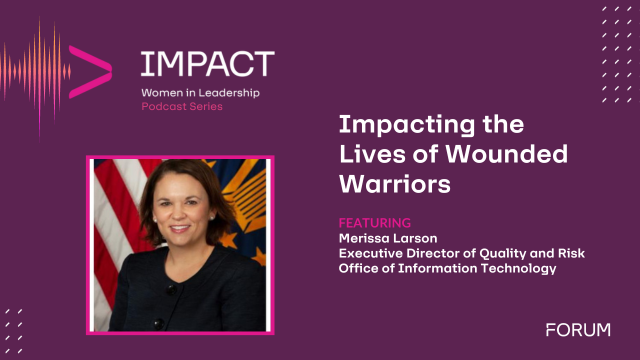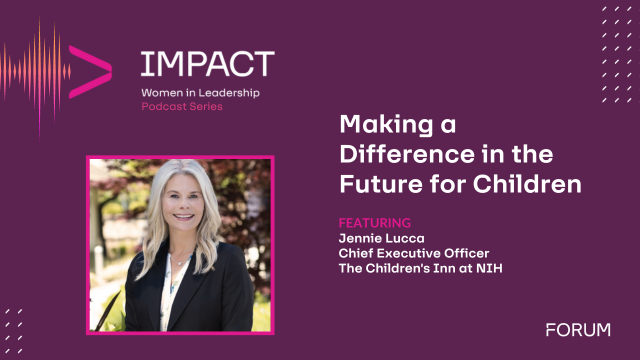November: best known for the cornucopia, a symbol of plenty and prosperity. Sadly, with the wave of mergers and acquisitions across the Health IT landscape, the Federal Government has fewer and fewer options to turn to. The independent SI is going the way of the dodo, and best-of-breed is giving way to suites. What comes next? And should we give thanks for that? Mike Farahbakhshian offers some takes as hot as grandma’s pumpkin pie. Suggested drink pairing: a nice eggnog.
Guess Who’s Coming to DinnEHR?
Happy November, Meaningless Useketeers! November is best known for Thanksgiving in the United States (and if you celebrate it in October, go back to Canada, you moose-sniffers). It is a time to rest, reflect, and give thanks for the good things the year has brought us. It’s a time for family to come together and remember why we see each other once a year, tops.
I’d say the Federal Health IT community is like a family, in that we constantly bicker and squabble but have each other’s backs where it matters. (Mostly for target practice.) And, looking back on FY19, we have much to be thankful for.
But wait! There’s someone new sitting at the table, awkwardly grinning and trying to make conversation.
- Is that? … It is! It’s Who invited Cerner?
- Didn’t you hear? Cerner came … with Ablevets..
- What? They’re TOGETHER? I didn’t even know AbleVets was Cerner’s type.
- Oh, you know how Cerner likes them: small, Veteran owned, and Agile.
- Stop.
- … Can you imagine what their scrums must look like?
- Oh God. Stop it. I’m trying to eat.
- Too late. You’re already picturing it. You know … I hear they’re into practicing SAFe®.
- Well, there goes my appetite. You want the rest of my plate?

Yes, by now you’ve all heard the news that Cerner is acquiring AbleVets. This makes a lot of sense for Cerner. Cerner can focus on being the largest provider of Federal electronic health records, and AbleVets can use their experience as a Scaled Agile development and integration shop to work on the countless ancillary applications that tie into an electronic health record. These applications include, but are not limited to:

- Patient portals
- Pharmacy, mail-order, electronic or otherwise
- Analytics and reporting platforms
- Mobile applications
- Telehealth
- Medical imaging device applications and repositories
- PHI clearinghouses
- Identity and access management
- Fee-for-service claims processing
- Purchased and Community Care application suites
- Value-based care applications
- Tubular Bells
- And many more!
By having its own integration arm, Cerner offers a clear value proposition: they can best integrate ancillary applications into MHS GENESIS and VA EHRM. This value proposition comes with an inherent risk, however: conflicts of interest. It’s entirely possible that the Cerner code can be tweaked – booby-trapped, if you will – so that only AbleVets can integrate it. I am sure that Cerner’s lawyers, and the respective DHA and VA contracting shops are keeping a vigilant eye on this. Certainly, other Federal Health IT vendors will be keeping an eye on this.

This should be of no surprise to anyone in Federal Health IT. Many product vendors either (1) have preferred integration partners (e.g., InterSystems and Ready Computing); (2) have merged with or acquired product companies (e.g., IBM and Red Hat, or Dell EMC and VMWare/Pivotal); (3) have their own product, as-a-service, and integration service wings in house (e.g., Oracle, IBM, and Microsoft); or (4) have spun off their integration and consulting business to body shops (e.g., Leidos Health spinning off its commercial Health IT arm to the Ettain Group).
The problem the Federal Health IT community faces is that the era of the independent system integrator is over.
I see two reasons for this.
- Better standards, with an emphasis on interoperability and containerization. In a sense, the Federal Health IT community is a victim of its own success. We opened standards and increased collaboration to the point that product companies can directly integrate their competitors’ products.
- Product companies accelerated this trend by acquiring or partnering with integrators that were originally product-agnostic. That’s great if you are a Government purchaser and want a mixed OpenShift/CloudFoundry environment, because Red Hat can speak Dell/Pivotal and Dell/Pivotal can speak Red Hat. It’s not so great if you are an independent systems integrator that came to prominence in an era where vendors didn’t speak each other’s languages.
What Is An Integrator To Do?
So what happens to independent system integrators – the SAICs, Northrop Grummans, and Leidoi? My advice is: find a product or as-a-service offering. Examples include analytics or cloud brokering.
Another angle is what my own company, By Light, has done. I don’t normally stump for my company here, but I feel it’s relevant to the discussion. We’ve made two recent acquisitions of note. We have acquired Metova Federal, which provides cyber range and test bed capabilities. (Cyber security is a capability Health IT will always need.) More relevant to surviving a post-Cerner world, we’ve acquired Cole Engineering Services, Inc. which gives us world-class modeling, simulation and training capabilities. Medical modeling and simulation is going to be critical in the coming years. I’ll explain why.
Health IT is rapidly becoming a standardized commodity. Some services are now effective monopolies/duopolies. Your cloud choices are AWS and Azure; your online shopping choices are Amazon (and maybe Walmart or Costco on a good day); and your Federal Electronic Health Record is … Cerner Millenium. Now, thanks to Cerner’s acquisition of AbleVets, your ancillary medical applications will be Cerner branded too!

As more software is automated, consolidated and commoditized, there’s less money and impact to be made from integrating and customizing it. Automation has won that battle. Yet no machine can fully replace a human doctor or nurse. Furthermore – I’ll stake my professional reputation on this – no AI will, not for a very long time, no matter what Andrew Yang tries to scare us with.
Robots, AIs and software (oh my!) are great at bounded and repetitive tasks, but not nuanced, context-dependent tasks like provision of medical care. We will be training doctors for the next thousand years, I guarantee you. By Light’s acquisition of a modeling and simulation capability is a product offering that’s built to last.
It’s Dangerous To Go Alone. Take This Advice.
 I’m not saying that everyone in the Federal Health IT community should jump into modeling and simulation. (Dibs.) I am saying every system integrator needs to consider some sort of product offering. For all the talk of “disruption,” “innovation,” and “transformation” we hear at Health IT conference “circlejEHRks,” there seems to be a lot of sticking to the tried and true out there. Cloud, cyber, analytics mobile, blockchain, ad nauseam. You can do that, but bigger and more successful integrators have beaten you to it.
I’m not saying that everyone in the Federal Health IT community should jump into modeling and simulation. (Dibs.) I am saying every system integrator needs to consider some sort of product offering. For all the talk of “disruption,” “innovation,” and “transformation” we hear at Health IT conference “circlejEHRks,” there seems to be a lot of sticking to the tried and true out there. Cloud, cyber, analytics mobile, blockchain, ad nauseam. You can do that, but bigger and more successful integrators have beaten you to it.
For smaller and mid-sized SIs, I’m going to suggest some alternate Health IT technologies to invest in, make strategic partnerships with, acquire, or be acquired by.
- Contextual Data Cleansing: There’s a big focus on analytics and data cleansing is a natural step in that process. The problem is that most data cleansing works with static or iterative rulesets. Using Natural Language Processing (NLP) to determine how a datum should be regarded is key. (Does the word “cold” refer to temperature, disease, or a clinician’s bedside manner?) Using multiple passes and Machine Learning (ML) helps refine the data cleansing as it occurs. Integrators: There are tons of companies to consider acquiring or strategically partner with. Two examples I like are HealthFlow and ValityX.
- Facial Recognition: There’s a lot of talk of biometrics in the context of telemedicine (e.g., FitBit, thumbprint or retinal scanners). Facial recognition can and will be used for far more than simple vitals and authentication. Role-based access, patient elopement, medical records access and self-service, using mobile device cameras as authentication tools, and sentiment analysis to improve User Experience (UX) will all hinge on facial recognition in the future. There are many products that leverage this. One example I like is Certify Global.
- Open Architecture Medical Devices: The Open Insulin Pump was just the beginning. I foresee more and more wearable medical devices being controlled by a smartphone as a local hub. Yet I don’t see many integrators talking to Apple or Samsung in anticipation of this.
- Transcranial Magnetic Stimulation (TMS): That’s right, I’m talking about zapping brains with magnets. There are already applications for PTSD, TBI and perhaps autism spectrum disorder on the horizon. The implications for Service Members and Veterans is clear, especially in combination with wearable medical devices. There aren’t a lot of places that work with TMS: I have been told about one called the Brain Treatment Center.

Back in my day, we just stuck our heads in microwaves. That’s how we ended up with the Insane Clown Posse in the first place.
There are many more technologies and companies that I can pontificate on, but FedHealthIT only has so much hard drive space. Suffice it to say that the cornucopia of technology and investments is full of options.
So even though there’s another guest sitting at the table, scarfing down the turkey and looking menacingly at the ancillary food products side dishes, have no fear. There’s a bounty of Health IT for us all. And that’s something to be thankful for.
Have a great November, everyone. Take the time to reflect, be thankful, relax and refresh yourselves. 2020 is almost upon us. Let’s make it a good year.













